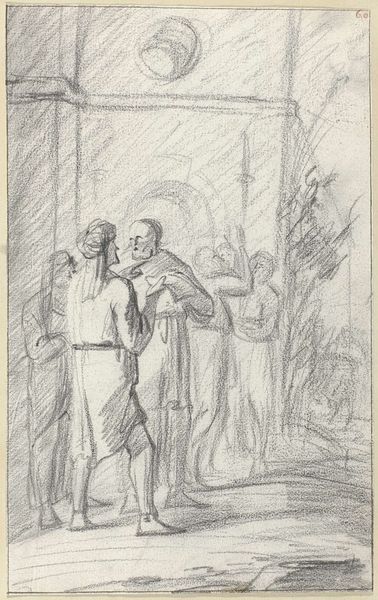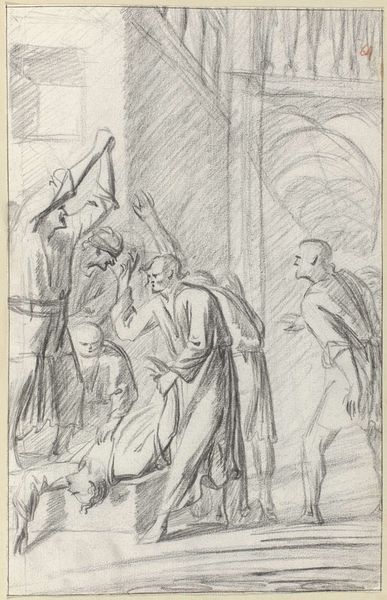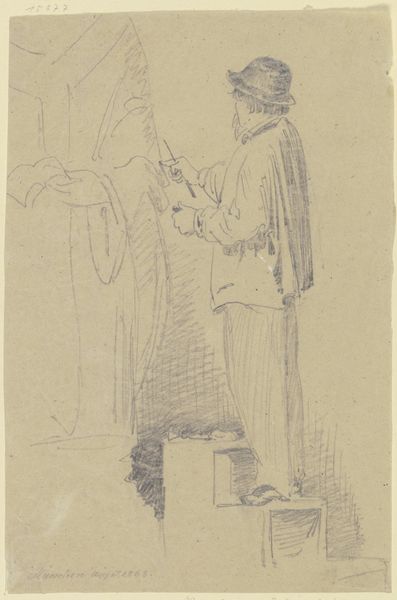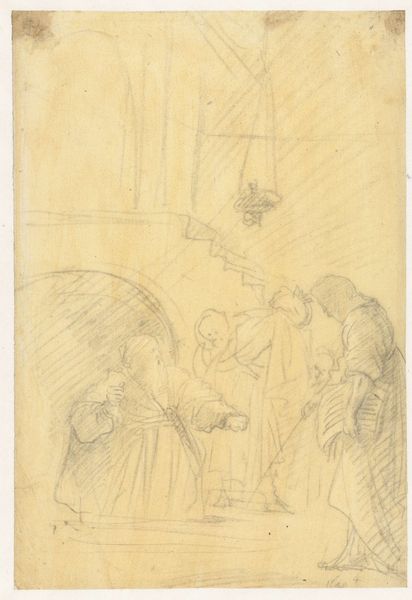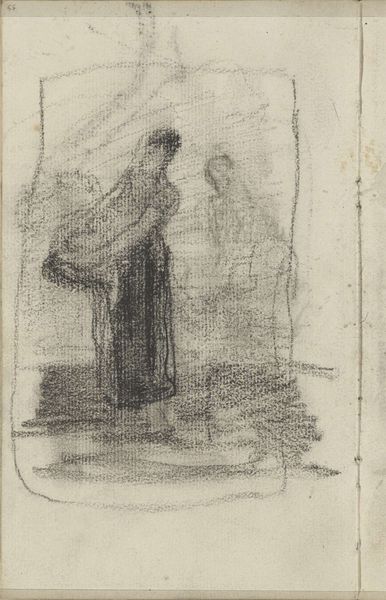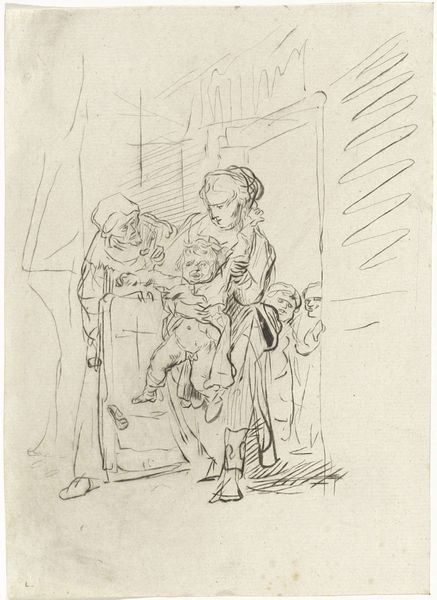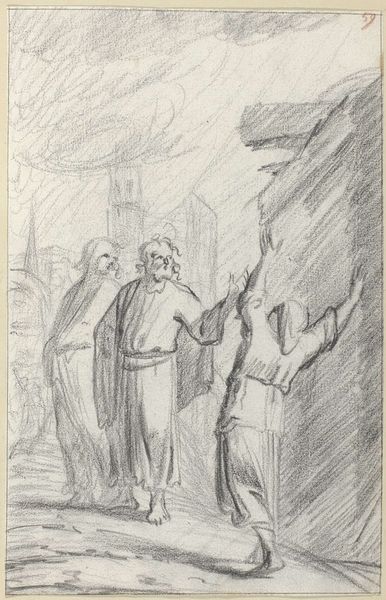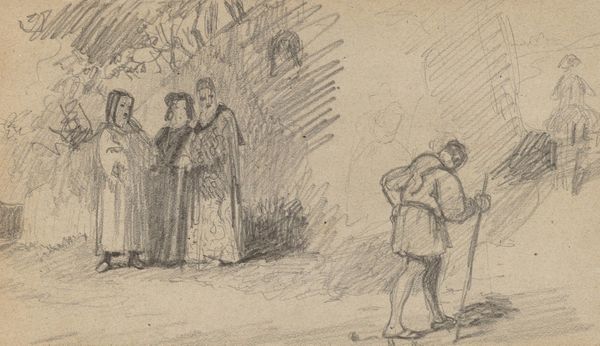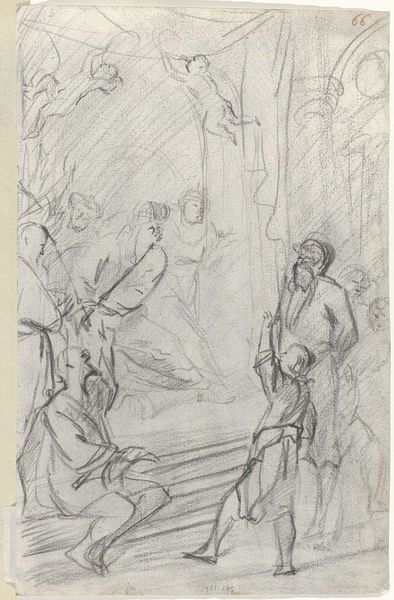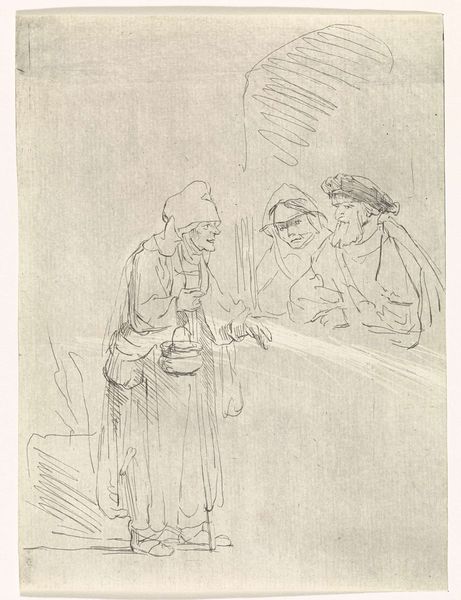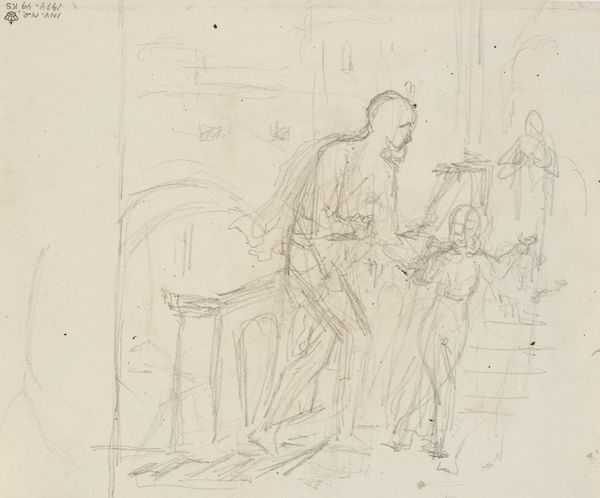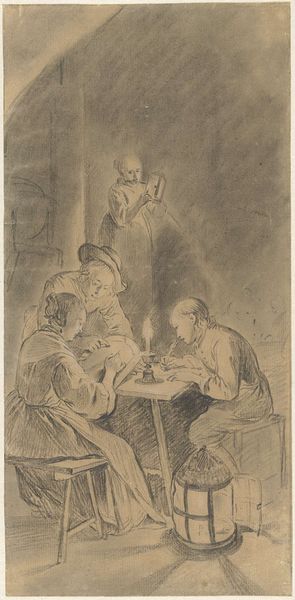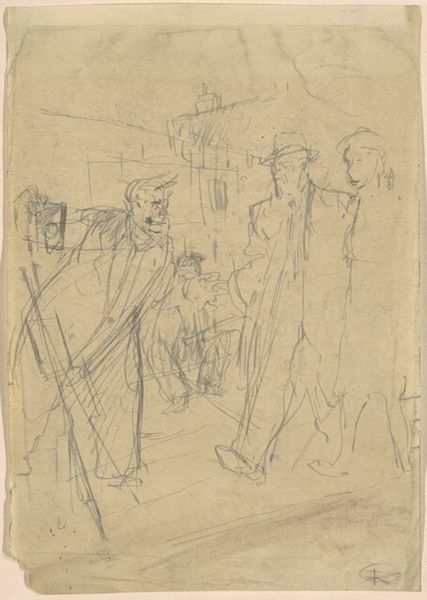
drawing, pencil
#
drawing
#
narrative-art
#
baroque
#
pencil sketch
#
figuration
#
pencil
Dimensions: height 303 mm, width 195 mm
Copyright: Rijks Museum: Open Domain
Curator: This is a drawing attributed to Pieter Fransz. de Grebber, dating back to sometime between 1610 and 1652. It’s tentatively titled "The Conversion of the Heathen Cornelius." Editor: My initial impression is of a subdued, almost ghostly scene, conveyed through the raw quality of the pencil lines. The figures seem caught between states, especially the kneeling figure in the foreground. Curator: Absolutely. And to situate it in a broader context, consider the Counter-Reformation and its impact on artistic themes. Religious conversion narratives like this gained traction as tools of ideological persuasion. What’s happening socially when an image such as this takes form? Editor: From a material perspective, I'm drawn to the sketch's efficiency. De Grebber uses simple lines to convey volume and form, allowing light and shadow to define the space. What pencils were available? Where would an artist get the materials needed to mass produce this piece and distribute to the masses? The simplicity belies the image's power. Curator: It speaks to power structures, undoubtedly. We see a clear hierarchy—the standing figures seem to command authority, while the kneeling figure embodies submission, potentially representing the shift in faith or power dynamics associated with religious conversions during that period. Editor: Yes, but it's interesting how the sketch highlights labor in image production. Unlike finished paintings, the drawing process is laid bare, emphasizing the hand and the conscious choices involved in constructing the image. How was the pencil held? How does it contrast with how drawings might be produced now, en masse, using AI? Curator: Those material conditions and production aspects reveal fascinating details! To further investigate its impact, let’s consider the social context—how this image may have served specific social functions, potentially perpetuating certain ideologies through a simplified religious narrative, using common and accessible methods and materials. Editor: Ultimately, viewing art through materiality allows for new insights, doesn’t it? It helps peel back the surface. Thank you! Curator: Agreed! Considering art from a social, political, and historical position creates multiple angles for understanding its implications and potential effect. It reveals so much, really.
Comments
No comments
Be the first to comment and join the conversation on the ultimate creative platform.
